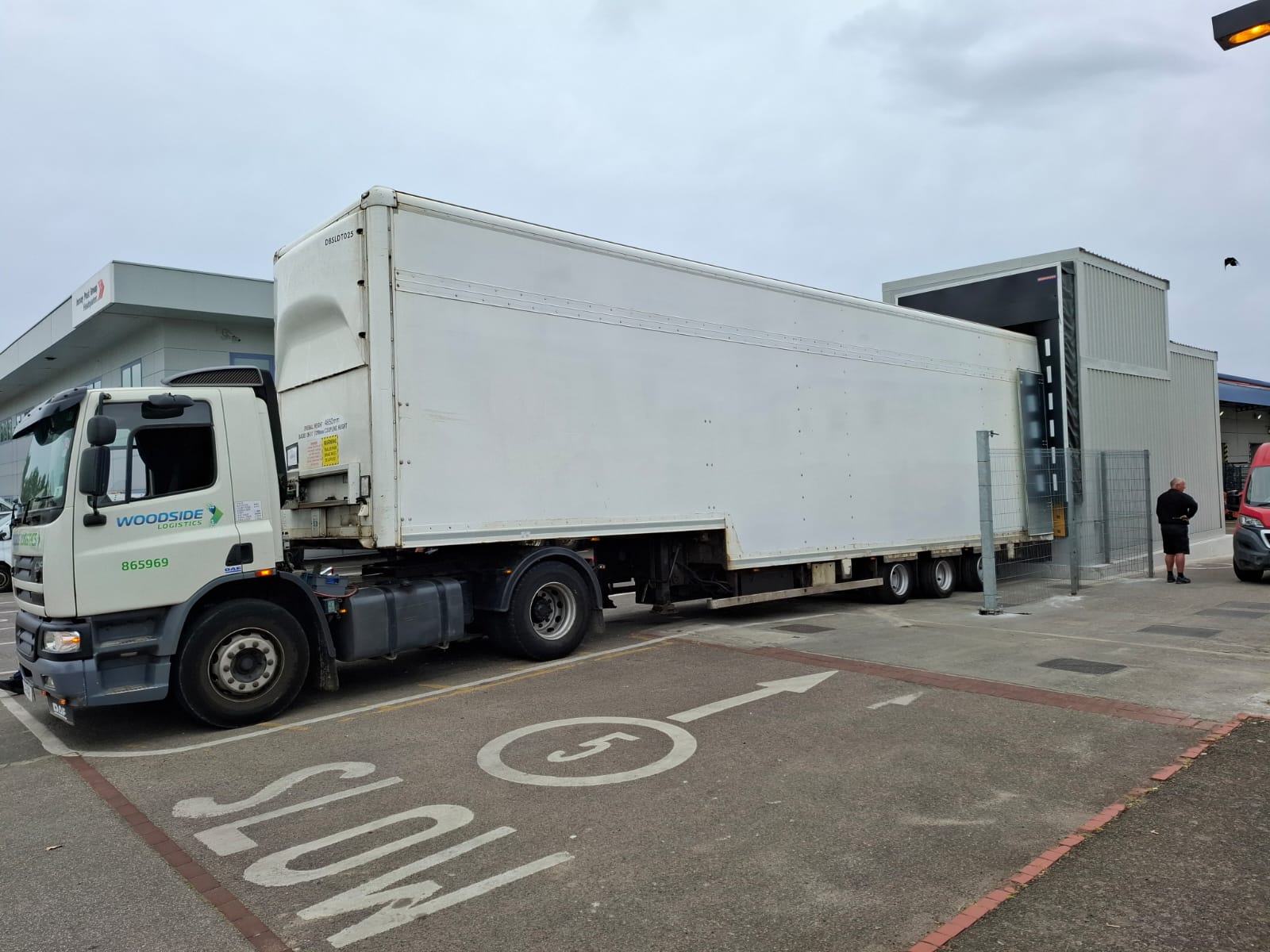Double Vision


With a double deck un/loading solution set to revolutionise European transport operations in its portfolio, Hörmann Transdek is on the march, as Peter MacLeod discovers.
Have you ever seen a double-deck HGV on the motorway and wondered how challenging it must be to load or unload it at a standard warehouse dock? Leon Butler, Managing Director of Hörmann Transdek UK Ltd – and a champion of industrial safety and loading bay efficiency throughout his career – certainly has, for he has grown the business on the back of it. The double-deck modular loading lift designed and pioneered by Transdek some 20 years ago, before its merger with German industrial doors expert Hörmann, has been the UK’s de facto solution for the difficult challenge of non-compatibility between the standard warehouse dock height and the two levels of the vehicle’s double deck.
Whilst double deck use in the UK is commonplace, to unlock these benefits in the EU becomes more of a challenge. The chassis of the truck is more complicated, expensive, and heavier than its single-deck counterpart, but the fact that it offers up to 60% additional capacity – 53 Euro pallets versus 33 – is a compelling argument in its favour. No wonder its use is growing, especially given the drive to eliminate carbon from the supply chain. However, growth has slowed in mainland Europe because the challenge is approached differently on the continent, addressing the issue with a vehicle-mounted tail lift that in comparison to Transdek’s pod is a clumsy, inefficient, expensive – around 15 to 20 % of the trailer’s capital cost – and potentially less safe solution.
Hörmann Transdek solves the challenge at the warehouse, with a modular lift that fits in front of the warehouse door or loading bay allowing both floors of a double deck trailer to be accessed and loaded safely and efficiently.
The continental tail-lift solution, on the other hand, has to be deployed as the vehicle abuts the dock, and rises up or down in a similar way to a tail lift on a light van. The significant disadvantages are in the fact that the steel lift and its multiple hydraulics are transported by the vehicle, taking up valuable space and weight capacity. Furthermore, it takes considerably longer to un/load than the Transdek solution. If that’s not compelling enough, the practicalities of trying to load a trailer with the tail lift married to a conventional loading dock leveller presents many hazards, a practise not accepted in the UK.
When I ask Butler about Hörmann Transdek’s plans to roll the solution out across mainland Europe, he says: “The product itself unlocks the use of the double-deck trailer to make it more attractive. The installation of one of our lifts as a retrofit takes just two days on site, because we don’t need any civil works such as bunded pits, as you would do with a normal scissor lift. With prime development land becoming less available and encroaching on flood plains, any surface or flood water will simply flow under the structure and drain away, allowing operations to resume faster following adverse weather events.”
Furthermore, the double-deck lift can be financed via regular equipment leasing arrangements, and it can be easily either removed or relocated to another site or bay when necessary. Safety-wise, it is built in conformance with relevant EN standards, features side barriers up to 2.2m in height to protect operators from fall from height and provides a defined loading sequence to standardise operations. With only a single hydraulic cylinder (versus the scissor lifts alternative’s four, eight or 16) lifting up to 20 tonnes, the Hörmann Transdek pod only requires servicing every 12 months.
“We can make the loading platform much more robust than a tail lift, because a tail lift has to be as light as possible to be put on the back of a trailer. With a fixed asset bolted onto a building, you can make it much more robust and resilient, because you’re not paying for fuel to take it up and down the roads.”
Looking at the bigger picture, Hörmann Transdek enjoyed a strong 2024 within the UK market, with new customer engagement increased by 20% across all the company’s product portfolio, whilst maintaining strong relationships with existing clients. It anticipates the market for double-deck trailers to rise in the coming year due to a number of factors, principal among them being the labour shortage, with the EU, Norway and the UK together missing over 233,000 commercial drivers.
Butler says Hörmann Transdek has long-standing relationships with most of the major high street brands and retailers in the UK. With such a to-die-for customer list, expansion into new markets should accelerate once European retailers understand the benefits. With a focus on the Benelux region and Central Europe, the company will be exhibiting a full-size Double deck lift on the Hörmann Groups stand at the Transport and Logistics exhibition this coming June in Munich.
It seems only a matter of time before the scales fall from the eyes of European operators and vehicle-mounted unloading systems and all their inherent disadvantages become a thing of the past.